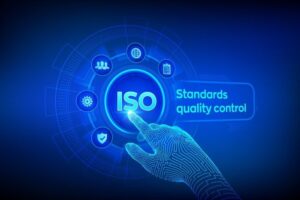ISO 13485 requirements is the Medical Devices industry’s most generally utilized worldwide standard for quality administration. Given by the International Organization for Standardization (ISO), the ISO 13485 standard is a compelling solution for meeting the specific necessities for a QMS in the Medical Devices industry. Receiving ISO 13485 gives an establishment to makers, and different guidelines, just as exhibiting a pledge to the wellbeing and nature of Medical Devices.
Beginning with the board uphold and distinguishing the client necessities for the QMS, you should start creating documentation including the Quality Policy, Quality Objectives, and Quality Manual. Together, these characterize the general degree and execution of the Quality Management System. Alongside these, you should make the compulsory and extra cycles and techniques fundamental for your association to make and convey your goods or services appropriately.
Requirements for ISO 13485:2016:
ISO 13485:2016 determines the necessities for a Quality Management System to deliver ISO medical devices and related administrations that reliably meet client and relevant administrative prerequisites. Conditions of ISO 13485:2016 are applicable to associations paying little mind to their size and paying little heed to their sort, aside from where unequivocally expressed.
The ISO 13485 design is parted into eight areas, with the initial three being basic and the last five containing the compulsory prerequisites for the Quality Management System. Here is the thing that the five principle segments are about:
Segment 1: Quality Management System
This segment discusses general QMS necessities, just as the documentation prerequisites of the norm. It incorporates the conditions for the Quality Manual, Control of Documents, and Control of Records, which are all necessary archives in the QMS.
Segment 2: Management Responsibility
The administration obligation necessities cover the requirement for top administration to be instrumental in the usage and upkeep of the QMS. Alongside making arrangements for the QMS, there is a requirement for top administration to be associated with the progressing audit of the framework to guarantee consumer loyalty and improvement.
Segment 3: Resource Management
The part on the administration of resources is short yet covers the need to control all assets, including HR, structures, and foundation, and the workspace.
Segment 4: Product Realization
The product necessities manage all parts of arranging and creating the product or service. This segment remembers prerequisites for setting, product requirements survey, plan, buying, creation of the product or service, and controlling the equipment used to screen and gauge the product or service. ISO 13485 takes into account necessities in part to be rejected if they are not relevant to the organization (for example, an organization that doesn’t plan goods or services).
Segment 5: Measurement, Analysis, and Improvement
This last segment incorporates the necessities expected to ensure that you can screen whether your QMS works well. It incorporates surveying consumer loyalty, internal reviews, observing products and cycles, managing non-conforming products, and remedying preventive activities. These segments depend on a Plan-Do-Check-Act cycle, which utilizes these components to execute change inside the cycles of the association to drive and keep up developments inside the processes.







